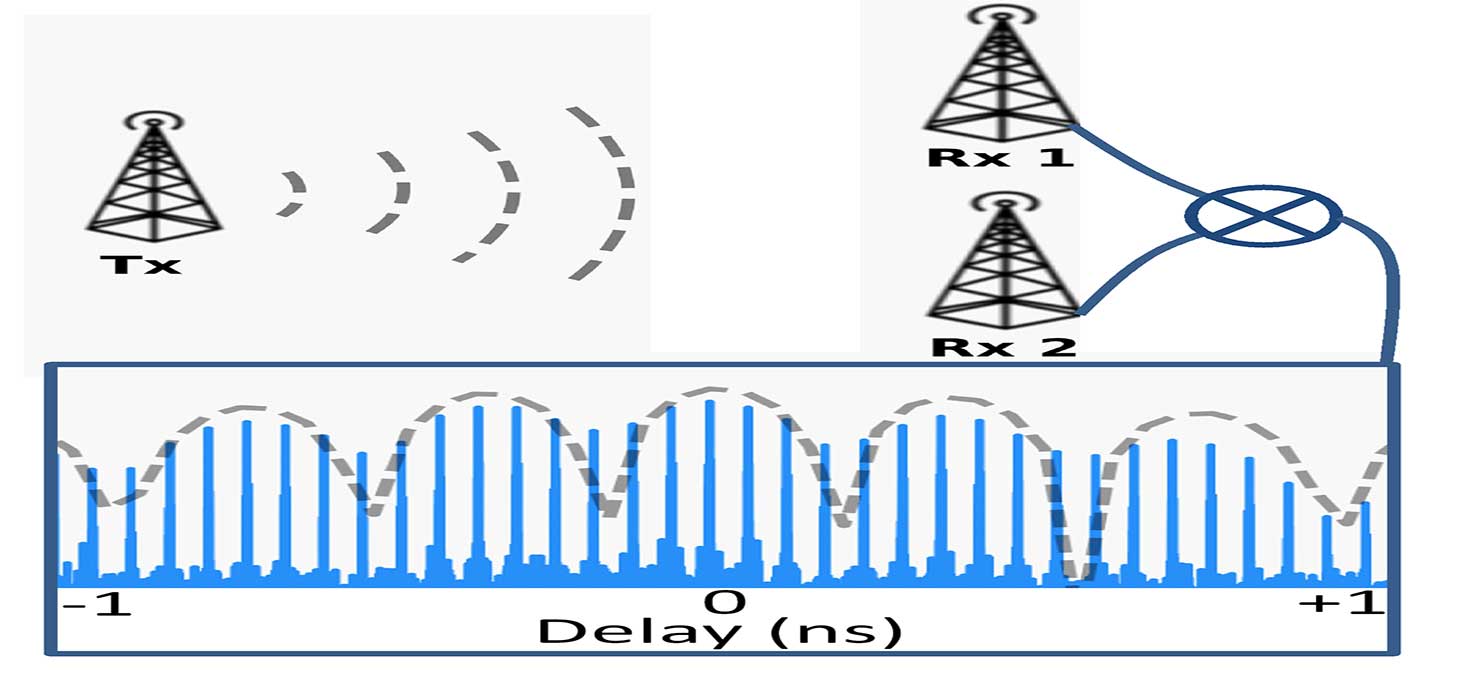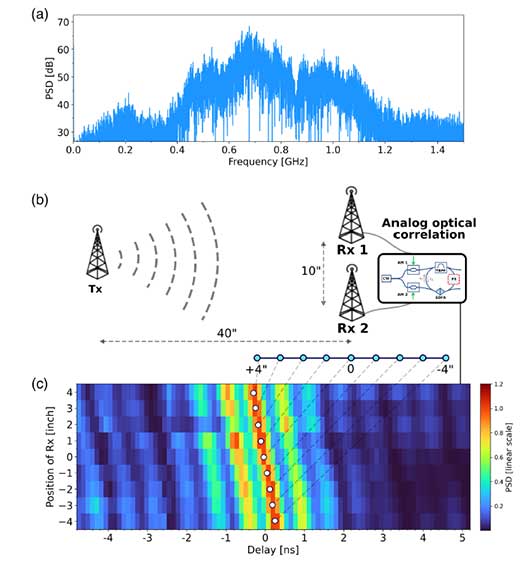- Share
- Share on Facebook
- Share on X
- Share on LinkedIn
Publication
On May 19, 2022

Researchers have devised an optical architecture to calculate the correlation of radio signals in an analog way. This operation would make it possible to locate radio transmitters with precision, or to improve the performance of optical interferometry in astronomy.
Signal correlation is a fundamental operation for many imaging and location-based applications. In astronomy, interferometry techniques provide high resolution images from the correlation of signals received by different antennas or telescopes. Similarly, we can locate a radio transmitter by measuring the relative delays of signals received at different locations by correlation. However, the digital techniques that usually perform this operation are intrinsically limited by the sampling rate of the converters, as well as by the real-time processing capacity. In practice, digital correlation cannot handle radio signals with a bandwidth of more than a few hundred MHz. However, bandwidth is an important parameter, as it is synonymous with more flux in astronomy and increased resolution in the case of transmitter location. Researchers from the Laboratoire Interdisciplinaire de Physique (LIPhy, CNRS/UGA) and the Institut de Planétologie et d'Astrophysique de Grenoble (IPAG, CNRS/UGA) have developed a new concept of photonic architecture that calculates in real time the correlation function of radio signals in an analog way and is adapted to signals with a bandwidth between a few MHz and a few GHz. These results are published in the journal Optica.

Figure: Measurement of the time difference of arrival of radio frequency signals by photonic correlation. The signal whose spectrum is represented in (a) is transmitted by the Tx antenna (b). Two receiving antennas (Rx1 and Rx2) pick up the signal and send it to the analog optical correlator (b). The maximum of the correlation function gives the difference in signal propagation time between the transmitting antenna and the two receiving antennas. By moving Rx2 (in 1 inch steps), a translation of the correlation function is observed, due to the change in propagation time between the transmitter and Rx2 (c).
This concept is based on the so-called multi-heterodyne interferometry and it consists in giving in real time the completeness of the correlation function of two signals by calculating simultaneously, for more than 200 values of relative delays, the cross-correlation coefficients between the signals. To do this, the radio signals are transferred to the optical domain and then sent through a pair of loops whose function is to produce replicas of the input signals that are shifted both in time and in frequency. The main contribution of the method is this double loop architecture which allows the calculation of the correlation function to be parallelized. The time step of the correlator, which corresponds to the difference in travel times in the two loops, is adjusted from a few nanoseconds to a few picoseconds to process signals with a bandwidth ranging from MHz to GHz. The researchers applied this architecture to the localization of radio frequency transmitters by time difference of arrival (figure) and obtained an accuracy close to 10 ps for an integration time of 100 ms.
It remains to characterize the performances of this architecture to apply it to the real-time localization of transmitters, wifi and cell phones for example. In astronomy, a preliminary experiment of imaging the sun by radio interferometry at 10 GHz will be carried out at IPAG in order to evaluate the interest of this technique for imaging.
Date
- Share
- Share on Facebook
- Share on X
- Share on LinkedIn